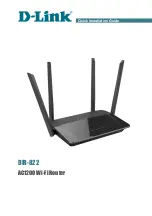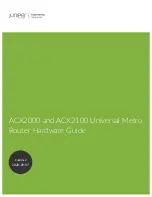
11-2
•
Route different types of cables (power cords and signal cables for example) separately. If they
are close to one another, cross them over one another. If you route them in parallel, keep a
minimum distance of 30 mm (1.18 in) between a power cord bundle and a signal cable bundle.
•
The cable management brackets and cable routing slots, inside or outside the rack, are smooth
and do not have sharp edges or tips.
•
When you route cables through sharp sheet metal penetration points or along sharp edges of
mechanical parts, use bushings or take any other action to protect the cables from being cut or
abraded. The sheet metal penetration points must be smooth and fully rounded.
•
Use the correct type of ties to bind the cables. Do not bind cables with joined ties. The following
types of ties are available: 100 × 2.5 mm (3.94 × 0.10 in), 150 × 3.6 mm (5.91 × 0.14 in), 300 ×
3.6 mm (11.81 × 0.14 in), 530 × 9 mm (20.87 × 0.35 in), and 580 × 13 mm (22.83 × 0.51 in).
•
After binding the cables, cut the excess from the ties, leaving no sharp or angular tips. See
Figure11-2 Cutting cable ties
•
When you bend cables, bind them as shown in
. To avoid excessive stress causing
cable core break, do not tie up the cables in the bending area.
Figure11-3 Binding cables where they must be bent
•
Route, bind, and attach excess cables for easy, safe maintenance activities and correct
operations.
•
Do not tie power cords to slide rails.
•
When you connect a cable to an articulated part, for example, when you connect a grounding
cable to a cabinet door, leave enough slack in cables and make sure they are not stressed from
any movement of the part.













































